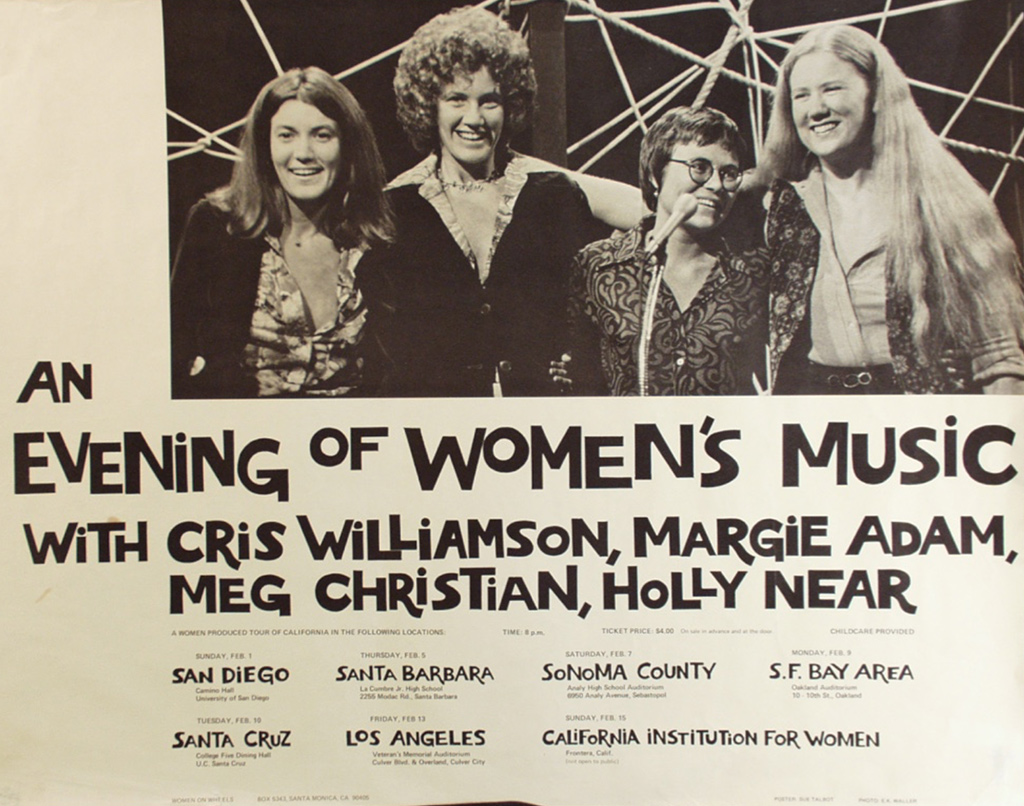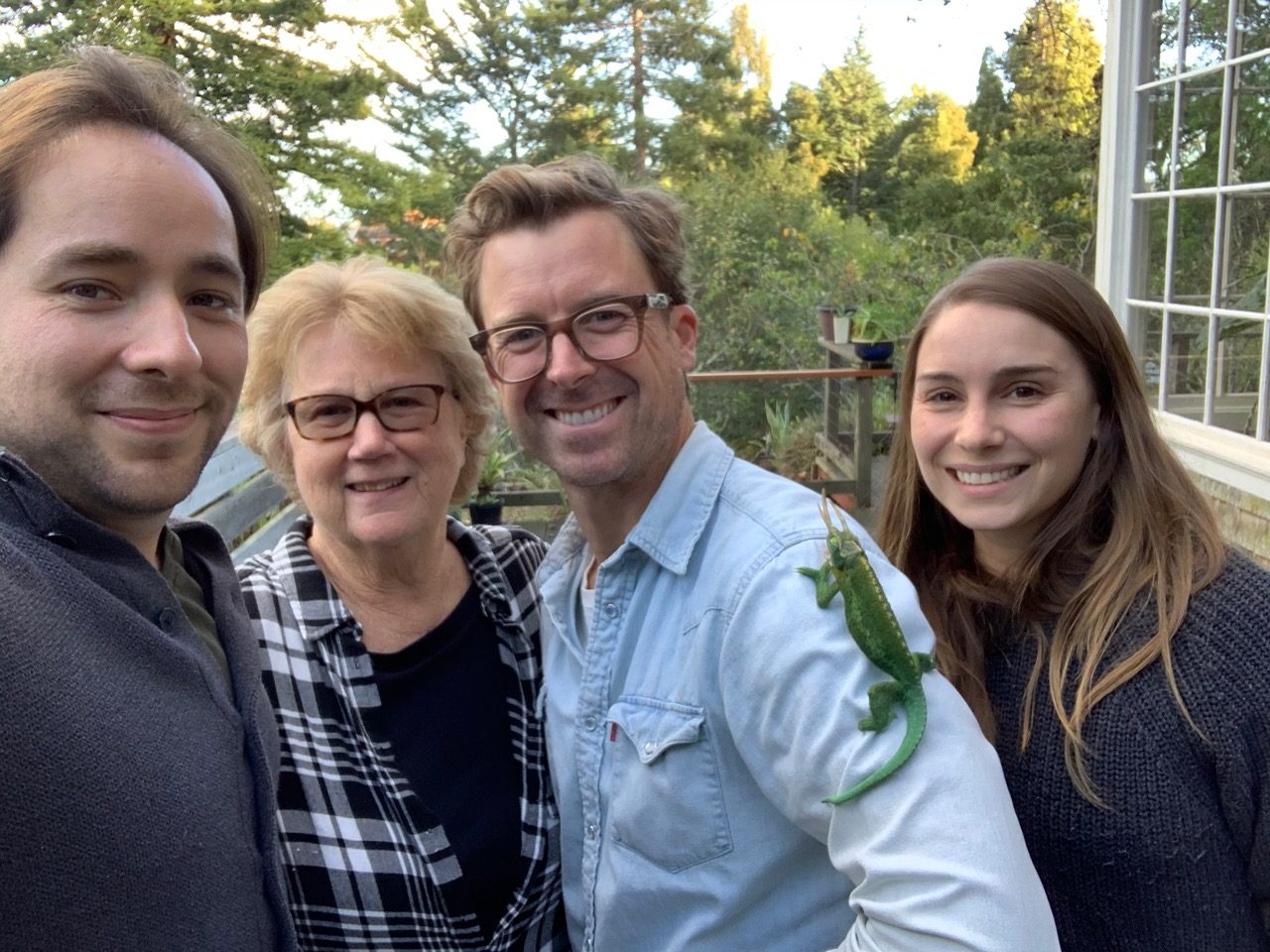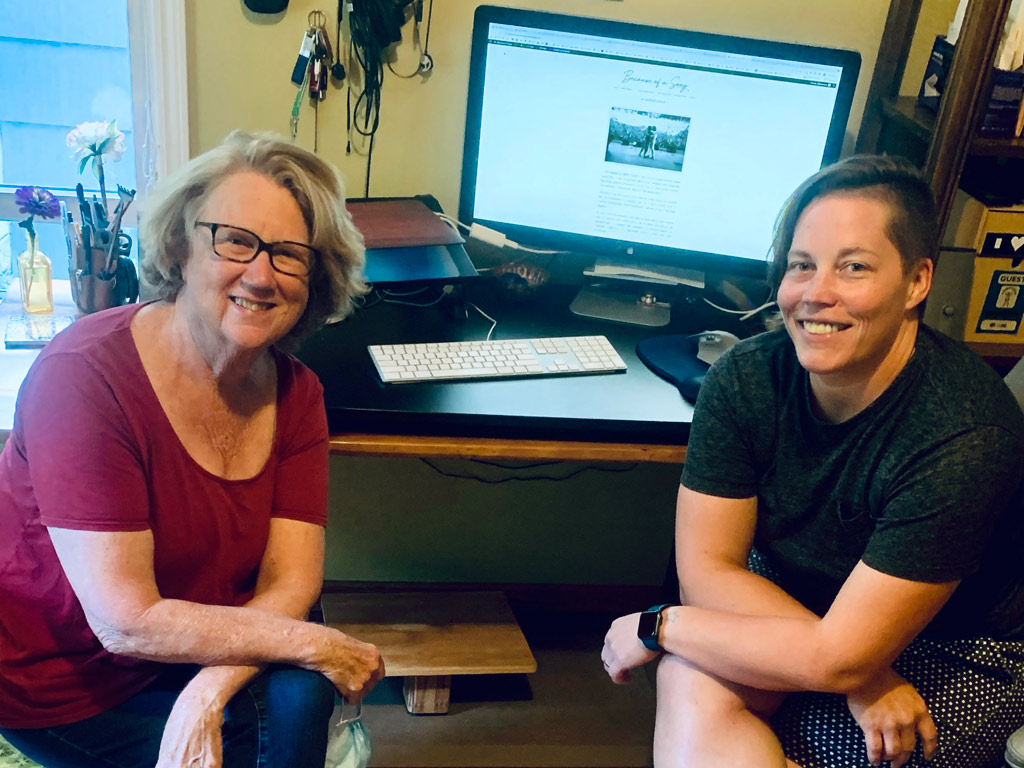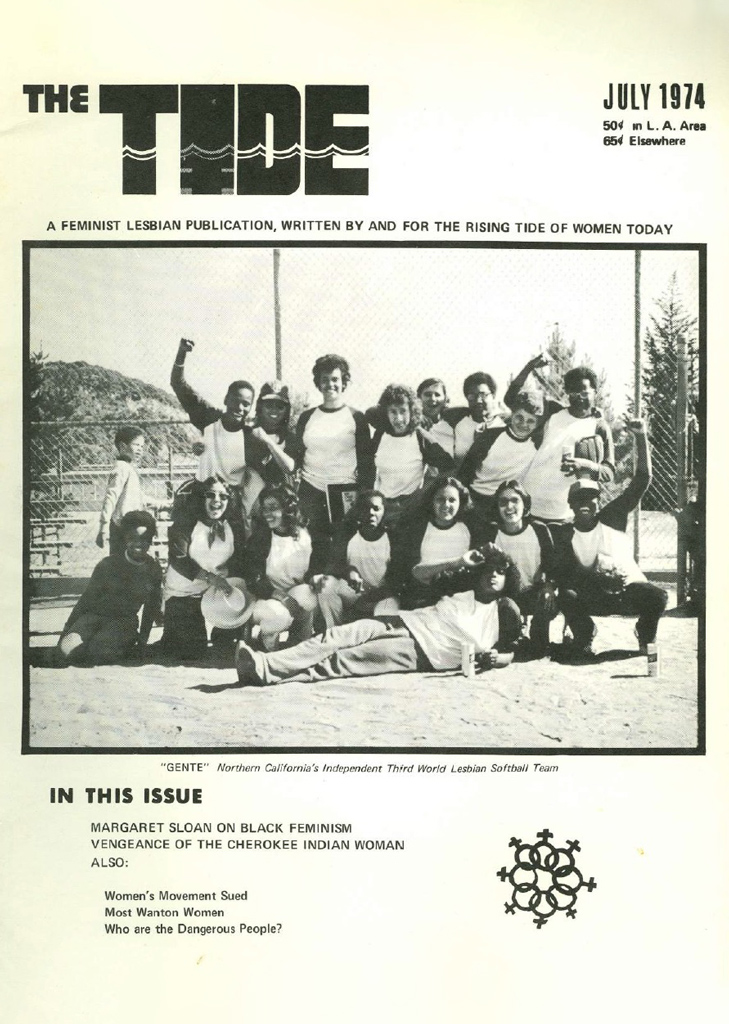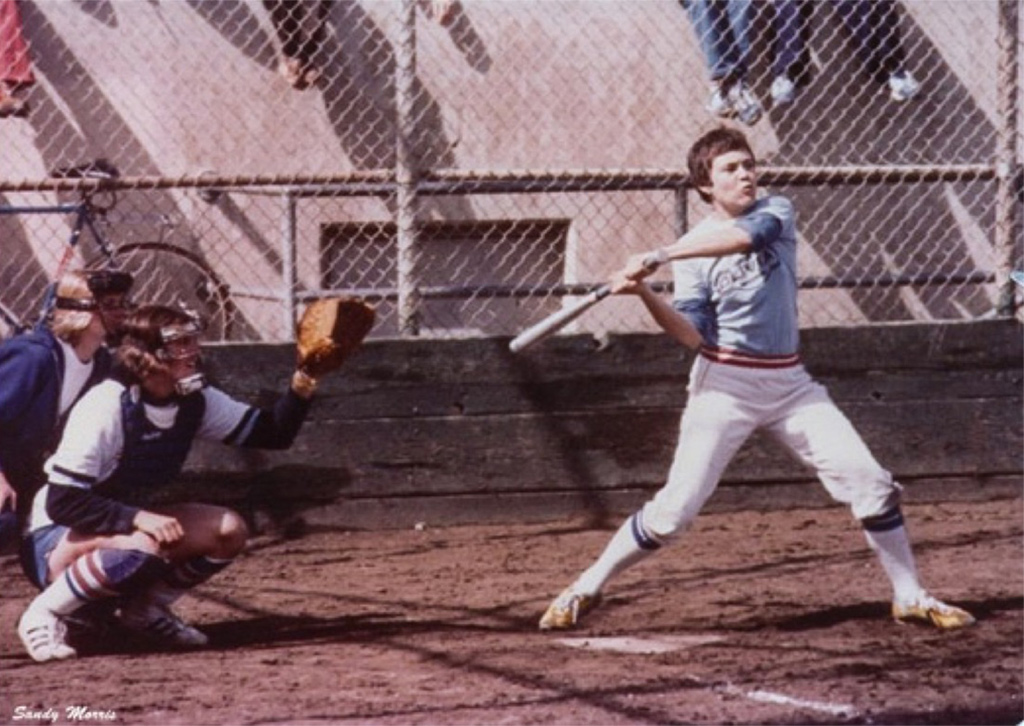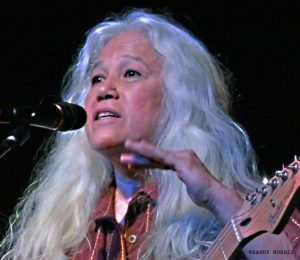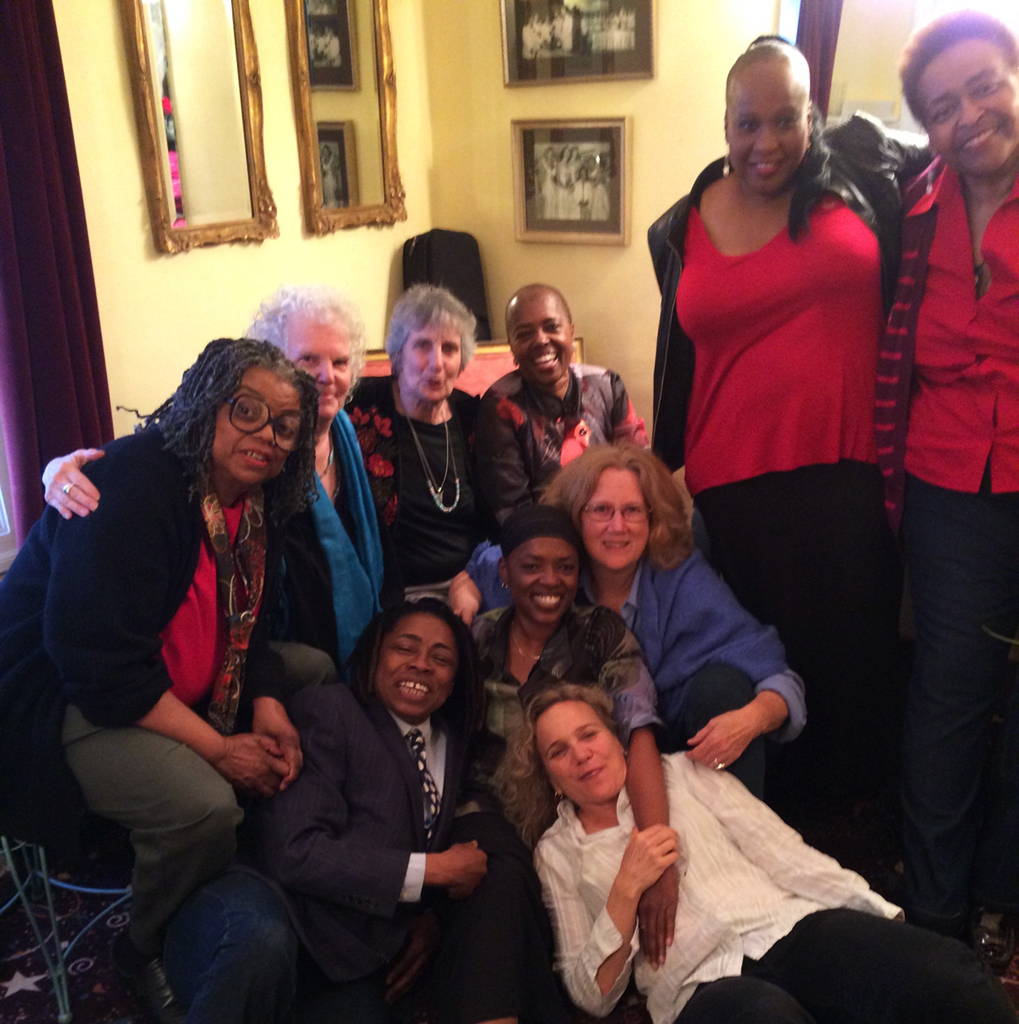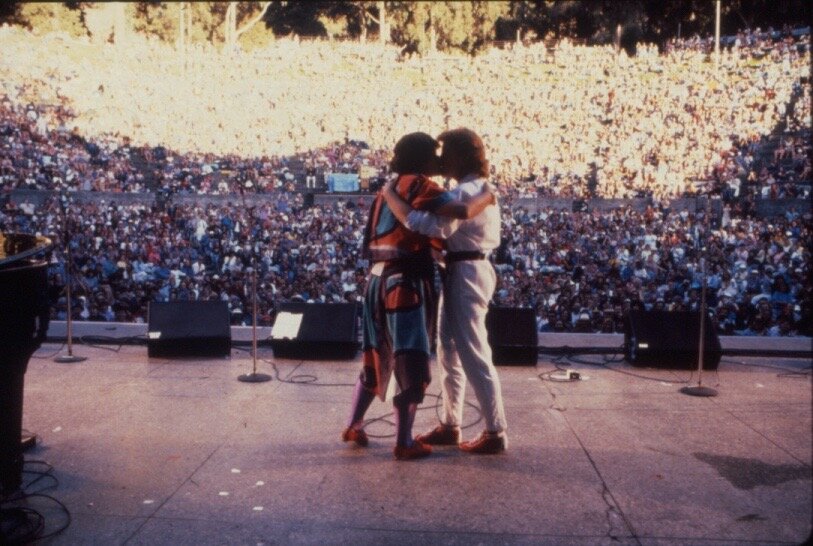From the Curator
Holly Near—curator, producer and host of Because of A Song
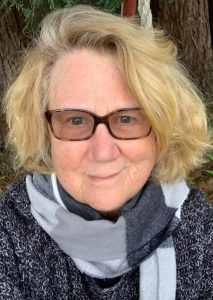 It has been a great honor to work on this archive. And humbling. None of us knew everything. We all knew something. The generations before us knew what they knew and we improved on it. The next generation will pick up from where we left off. That is how it goes. We have left a huge legacy of knowledge there for the taking. The archive is a small piece of it.
It has been a great honor to work on this archive. And humbling. None of us knew everything. We all knew something. The generations before us knew what they knew and we improved on it. The next generation will pick up from where we left off. That is how it goes. We have left a huge legacy of knowledge there for the taking. The archive is a small piece of it.
Were mistakes made? Yes. Was it an incomplete investigation? Yes. Were there things we didn’t understand? Yes. White women didn’t know much about racism. Middle class women didn’t know much about class. Able bodied women knew very little about physical difference. Oppressed people were pulling themselves out of centuries of abuse. Still, internalized oppression does not depart willingly. We were unpracticed at coalition politics. We had to feminize all the previous theories about systemic oppression.
Therese Edell, one of our finest singer/songwriters from Ohio, gets multiple sclerosis. Deidre McCalla and l learning how to support.
This extraordinary flowering did not get birthed in a perfect state. It was messy. Exclusive. Inexperienced. Underfunded. And because of its strong lesbian feminist identity, it was often rejected, criticized, made fun of, feared, and perhaps worst of all, ignored.
Having been vilified by one’s own parents kept many women occupied with their personal struggles. Parents dragged kids to psychiatrists when homosexuality was considered a mental disorder. Lesbians’ children were taken away and given to straight people. Dykes were beaten in alleys outside of the women’s bars and tires slashed.
In or out of the closet, most women were struggling to get equal pay. Their bodies were humiliated by doctors. They were living in marriages that traumatized their hearts and safety. Raising children without support. Women from multiple cultures had multiple issues with which to contend.
So it made sense that lesbians began to build an alternate culture. Many women went to Laney College for $2 a credit to learn carpentry, auto repair skills, bookkeeping and hair cutting. A barter and trade economy was informally put in place. Women shared cars to get to events and rallies and lived together in big houses no one could afford if they were on their own. Women prioritized their hard earned cash. Time and time again, they bought tickets to lesbian cultural events—not just once or twice a month but multiple times each week! Lesbians called themselves Lesbians keeping pressure on government, media and the gay movement to end the stigma of invisibility. All this without cell phones, internet, or facebook. It was an in person, up close and personal political movement.
However, to this day, most books/articles/lists skip over women’s music. Looking online for lists of lesbian songs, one is hard pressed to find any artist from women’s music included.
Mary Watkins and I getting ready to go on tour in the mid-seventies.
The surface is barely skimmed in this research, but one thing is certain—the women’s music that came out of Oakland, CA was at the tipping point of the feminist revolution in the 1970s. The music continues to this day challenging inequity, building and sustaining community, supporting local artists, uplifted by national treasures and connecting with global activism.
Women’s Music is a concinnity of sound: orchestras, big bands, choirs, rock bands, jazz quintets, drum ensembles. The story includes artists, producers, photographers, sound engineers, graphic artists, music distributors, arrangers, managers, agents, audience, and You.
AND there were dancers who choreographed to Women’s Music as their primary material.
AND there were poets who had a major influence on the music community. We could not have had such illuminating conversations were it not for Maya Angelou, June Jordan, Audre Lorde, Angela Davis, Alice Walker, Adrienne Rich, Joy Harjo, Cherri Moraga, and Oakland’s own Pat Parker and Judy Grahn. We built on their work.
AND there were organizers and bookstores, coffee houses, restaurants, and all over the world an explosion of press collectives and newspapers—all part of creating space for lesbians—all before cell phones and social media. And the audience that chose again and again to spend what little extra money they had on women’s music. That was so essential. These women were the glue. Without this glue, Women’s Music would have come unstuck.
There is no doubt that Meg Christian, Margie Adam, Cris Williamson and I made the first highly visible splash on the pallet of Women’s Music and lesbian culture. A half-hour documentary was made in 1974 called Come Out Singing produced by Lynne Littman (see reading room). It was aired on PBS Los Angeles and Lynn won a local Emmy for her work.
The Women on Wheels Tour in 1975 was performed in large venues in seven California cities. The tour introduced woman identified music to thousands of people and was noticed by such media outlets as Rolling Stone magazine. Marianne Schneller put up the initial funding which she borrowed from her father. She was a valiant producer along with dozens of women who joined in—donating their time and skills to make this tour happen. It was a pivotal moment in the evolution of what became known as “Women’s Music.”
Alix Dobkin from New York (Lavender Jane Loves Women) and Maxine Feldman from Los Angeles (Amazon Women) led the way to writing the most specific and out lesbian songs. And Cris Williamson’s inspirational Changer and the Changed released in 1975, has sold over 500,000 copies and continues to sell to this day.
All-women record labels, distribution companies, and concert promoters sprouted up across the country and in many other English-speaking countries. In Chile, once the Pinochet dictatorship was brought down, Chilean women singer/songwriters began to investigate feminist music.
Composition and Feminism Workshop with Holly Near in Chile, November 2016
Back row: Alexandra Acuña, Cecilia Concha Laborde, Holly Near, Isabel Aldunate, Jan Martinelli, Claudia Stern, Yana Millaqueo, Karen Anderson, Evelyn González, Vasti Michel
Second row: Angelina Jara, Fredrika Keefer, Christelle Durandy
Front Row: María José Reyes, Jackeline Castro, Nicole Gutiérrez
The fact that there seems to be a new curiosity about the work is welcomed. And it is never too late (for the living nor for posterity) to try to tell the truth. In these interviews we have an opportunity to hear from 24 dedicated artists who have a strong identification with Oakland, CA. I thank them.
Several young people have worked on this project. It has been hugely fulfilling to feel their curiosity and enthusiasm for these interviews. It was not just another day at the office for any of us. Covid stopped the in-person work and we moved to Zoom.
I encourage us all to take something away from each artist that might elevate our own work, our own sense of the artistic process, our collective understanding of how social conditions and geography define our contributions.
The telling of a story starts with a point of view. History is not a fact. It happens. And then, it is in the telling and retelling of the stories that we come to understand events, ourselves, and each other. To tell the story of feminist, lesbian, woman identified music, what came to be known as “Women’s Music,” requires multiple voices and genres.
“One thing is clear. No matter where we come from or what our experience, if we don’t see that feminism means all women, then it doesn’t work for any of us.” -Ginny Z Berson
We who love Women’s Music, we whose lives were changed by its very existence, are now able to document it as accurately as possible from all corners of the world, each contributing what she knows and archiving collective knowledge/memories—leaving it somewhere to be discovered.
And by the way, Women’s Music did not replace softball.
There’s nothing like going through 6 months of chemo, a coupla surgeries, and radiation t0 raise the quality of everyday appreciation and mindfulness of the gift of life! -June Millington
Wherever you are around the world, leave a trail.
Remember, the world is, and has always been, changed
BECAUSE OF A SONG!
Back row L-R: Mary Watkins, Terry Garthwaite, Alix Dobkin, Sandra Washington, Tammi Brown, Linda Tillery. Middle Row: Melanie DeMore, Sharon Washington, Holly Near. Front Row: Barbara Higbie

December 2021
PS. We end with a kiss.
In 1985 at the Greek Theater in Berkeley, California in front of 8000 people attending Redwood Record’s all-day concert, jazz singer Rhiannon and singer /songwriter Holly Near kissed each other. That might be commonplace now. Then it was not. It was a public expression of tenderness, revolution, respect, and a radical statement of women loving women.




